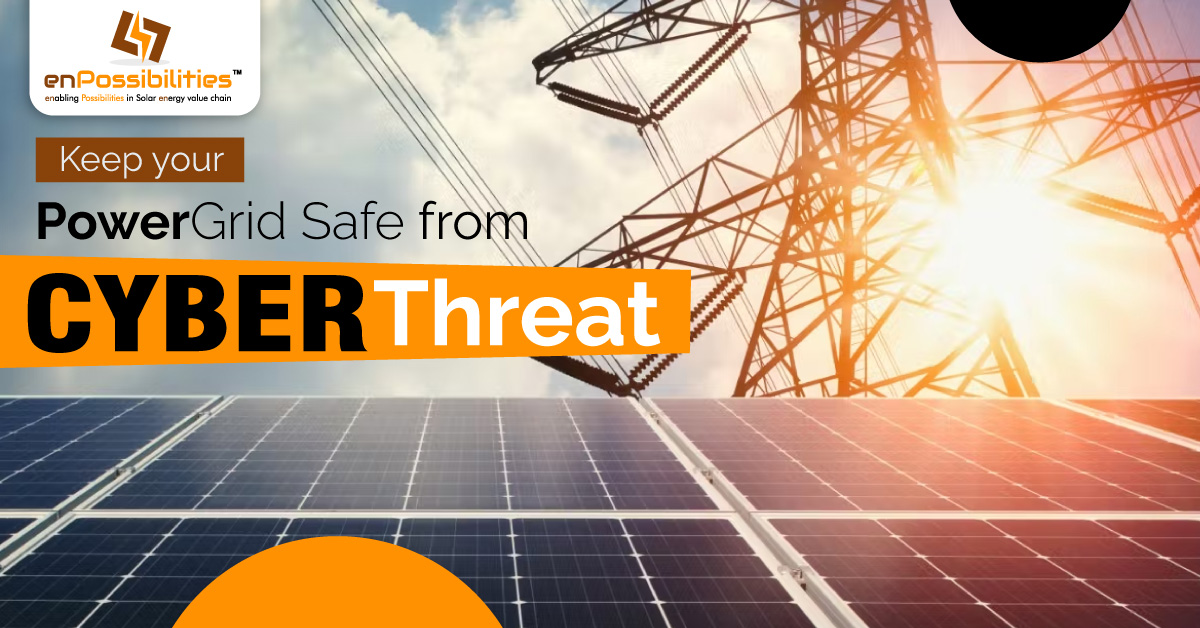Because of advancements in technology, falling costs of solar panels, and the advantages of on grid inverters in India, solar power has emerged as the frontrunner in the renewable energy industries of the country. However, cybercriminals can target solar power systems just like any other type of infrastructure.
As power grids become increasingly digitized and power plants become increasingly connected, PV assets are at greater risk of being hacked, jeopardizing the reliability of the plant’s power supply. While the sector was founded on structural and mechanical engineering principles, it today relies heavily on equally effective software components, leaving it vulnerable to a wide range of cyber threats.
Methods for Hacking Solar Energy from on-Grid Inverters in India
Solar power inverters, if widely exploited at the right time, can knock off the power supply of a whole country. A wall-mounted inverter is used in high-end and budget solar energy systems to transform DC power from rooftop solar panels into AC power, which can then be used within the home or, if excess, exported to the local power grid. Most of these kits include “smart” software for analyzing the customer’s energy consumption and keeping tabs on the inverters by the engineers. For numerous reasons, cybercriminals could potentially abuse inverters, and the software layer that connects them to the internet is the entry point. Solar power plant operations are vulnerable to attacks that take advantage of vulnerabilities in the solar panels.
Such attacks might have severe consequences for a country like India, where the on-grid solar system is gaining popularity. Most countries, even those with the best solar policies, do not have sufficient energy reserves to compensate for a plant’s lost production due to a cyber-attack. It is costly for developers to have vast power supplies as a backup.
Dangers of Using Smart on-Grid Solar Inverter In India
Even a highly efficient and secure on-grid solar system poses a security risk to any internet-connected device. The inverters provide voltage management operations via the grid via internet-connected software. When put to good use, this concept allows smart inverters to regulate the power voltage going into the grid, reducing the frequency and severity of potentially disastrous variations. However, hackers may maximize harm by allowing voltage to get out of control if they could seize control of the smart inverters. This will cause power outages of various degrees.
If only a small number of inverters were hacked with incorrect voltage settings, the grid would barely notice. The most dangerous scenario for the grid is when software controls many smart inverters and simultaneously shifts voltages in the wrong way.
Inverter manufacturers of solar energy storage systems can take precautions to protect themselves from cyberattacks. However, when the internet is involved, hacks are possible, and the damage to the grid might vary depending on the sophistication of the cyber-attack. When seen on a regional scale, a cluster of voltage-oscillating inverters has the potential to lower grid voltage and cause infrastructure damage. A sophisticated attack on the transmission and sub-transmission networks could cause large-scale blackouts.
Possible answers
A few pioneering solar power firms have developed a straightforward and efficient answer. With the support of additional, uncompromised inverters, it helps counteract cyberattacks on smart inverters.
Connecting two solar system smart inverters to the exact location on the grid makes them appear to the grid as if they were a single, massive inverter. As a result, the inverters can coordinate their efforts to maintain a constant voltage across the system.
If one inverter’s settings are compromised due to a cyberattack, the control curve for that inverter will steepen, but the control curve for the other inverter will flatten, so the overall curve will not change. Instead of communicating with one another or a central authority, each inverter would be programmed to decide on its own whether or not the curve should be lowered.
This solar energy storage technology shines brightest in its simplicity of implementation. To detect and counteract voltage oscillations, this software will use features already included in the code of the smart on grid solar inverter in India. The inverter manufacturer or the utility can integrate the software into each smart inverter. With this approach, a complex communications network is not immediately necessary in the event of an attack. The fact that each inverter may react independently is another distinct benefit.
Assuring the reliability of India’s electrical grid
Protecting a system from the most recent cyber threats requires constant monitoring and updating of all network-accessible data infrastructure and security-related software. As cyber-attacks have increased in sophistication, the Indian energy sector has become more cautious, investing more resources into cyber security.
The government of India has ordered that all government agencies implement an ISMS (Information Security Management System) in line with ISO 27001. This would ensure that all agencies fully comply with all relevant cybersecurity policies. The government has also issued computer security guidelines and distributed them to all relevant agencies.
Cyberattacks on energy infrastructure are rising; thus, the renewable energy industry needs to prioritize bolstering the security of its systems. If you want to ensure that your power grid is secure from cyber attacks, you may get in touch with enPossibilities.

